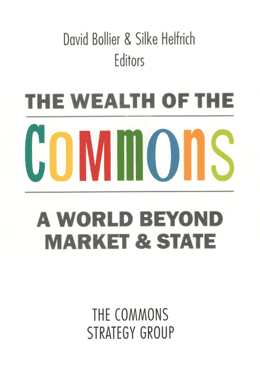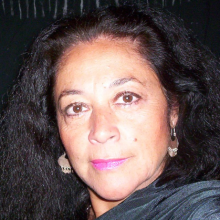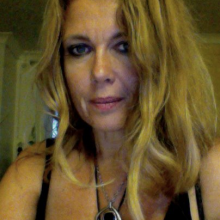This paper partially builds on Gallardo, G. L., and E. Friman. 2011. “New Marine Commons Along the Chilean Coast. The Management Areas (MAs) of Peñuelas and Chigualoco.” International Journal of the Commons (5)2. Data was collected through fieldwork in 2008 and 2011, and email and phone contacts.
In the mid-1970s, with the neoliberal economic policy in Chile, exports of the shellfish loco – the most important species economically – increased, rapidly incorporating artisanal fishers into the global market. “Landings” (or the catch) of loco soon reached unprecedented levels only to abruptly fall again – taken as a sign of overexploitation. After a decade of conservation measures (seasonal closures, national quota and bans) that left fishers at odds, a new fishing law was enacted in 1991, instituting a new scheme of “territorial use rights in fisheries,” or TURFs.
Chilean TURFs, known as management areas (MAs), work within a co-management framework to combine government regulations with fishers’ own rules. The TURF system allows fishers to receive exclusive, nontransferable and renewable access and use rights to specific benthic resources (those near the bottom of a body of water) within an allocated seabed. TURFs are only granted to fisher organizations. Between 250 and 600 hectares in size, the MAs are in the prime fishing grounds within the five nautical miles of the coastal zone reserved for artisanal fishers. Since 1997, TURFs have spread along the Chilean coast as the fisheries management regime for more than 30,000 fishers.
Artisanal fisheries land almost all edible fish in Chile, while any high value species generally go to export. Fishers are organized around caletas, about 440 permanent small-scale fishing ports within private or State/municipal land. In some rural areas, caletas are equivalent to fishing villages; in others, fishers live some distance away. A caleta usually involves a pier, a boatyard, huts or sheds in which fisher camp, or houses or a community in which fishers live. Rural caletas often lack electricity, running water, sewage systems and paved roads. Since the new legislation, fishers must fish in a permanent place, no longer allowed to move along the coast, a rule that many fishers do not appreciate.
From rivalry to collective action
To apply for an MA is a challenge. Fishers must organize, recruit members and choose leadership. Each organization must decide on its own rules, sanctions for noncompliance, joining fees, exit rules, surveillance mechanisms, income distribution and amounts to set aside for MA costs and social purposes. This demands a certain level of organization and social cohesion. Regulations can be changed by the assembly, i.e., all members, which make key decisions. MAs have a board in charge, and often delegate responsibility for administration, vigilance and commercialization in commissions. Fishers collectively decide when to harvest and at what price to sell, instead of competing for resources in boat crews of three or four as they did earlier. A third of all existing fisher organizations (including non-MA ones) sell their landings in common (INE 2008–2009).
In terms of fishing, the MAs provide better management and planning, greater resources and an improved extraction system. The more than 600 fishery-organizations also empower fishers in their dealings with government authorities, middlemen, restaurants and export companies. Self-employed, artisanal fishers are used to doing without state social welfare, i.e., pensions or insurance for health, disability or death. Within the MAs, they are now able to provide such social welfare benefits for themselves.
TURFs for making a living? TURFs for long-term sustainability?
Incomes derived from MAs vary remarkably, as do MA costs that depend in large part on the size and location (urban/rural) of fisheries and the distances to get there. In the early years of the TURF system, performance of MAs in region IV, the system’s “cradle,” was rather poor, disappointing fishers’ high expectations. Measured in 2003, only five of thirty MAs studied did well economically; the rest performed regularly or worse (Zuñiga et al. 2008). Thus MAs, while not a complete economic solution for fishers, are a complement to their livelihoods.
Since 1998, fishers have been allowed to extract locos (the main species for most MAs) only within MAs, and it has become illegal in the open access zones that coexist with MAs. Such open access zones are open to all fishers registered in the region. Both MA and non-MA members try to exceed the existing rules for livelihood reasons. In fact, half of fishers’ incomes (including the incomes of MA members) derive from illegal extraction in open access (Orensanz et al. 2005).
And yet scholars and authorities have found that the TURFs are helping to conserve fisheries within MAs – while the contrary holds for open access zones (San Martin et al. 2010) even though the two are ecologically connected. These results show that sustainability may not imply profitability in the short run; low economic results can even indicate a long–run advance towards sustainability (Zuñiga et al. 2008). However, if a MA performs economically poorly, it “further encourages shifts to more desperate and destructive fishing techniques,” endangering the ecosystem (Qashu 1999). Fishers’ livelihood needs may overshadow conservation concerns if economic returns from the MA are lower than the costs and efforts of engaging in it, and benefits from the territory are less attractive than those outside of it (Gallardo and Friman 2011).
Thus, good economic returns and the value of fishers using their TURFs are two conditions that have to be fulfilled to perform well. Also associated to successful TURFs are two preconditions: one is resource abundance (which might imply multi-species extraction), and the other is sufficient demand from national and/or international markets. However, it appears that human agency in the form of capable leadership and institutional skills – and the capacity to confront new challenges – may be the key condition for economic performance (increasing incomes, income stability and per capita patrimony) and for institutional robustness (well-functioning organization, participation in decision-making, respect for self-imposed rules, few free riders, trust, cohesion, empowerment, self-esteem, social welfare system). Taken together, these pre(conditions) can enable fishers to begin an upward spiral of success in meeting new challenges and diversifying activities that in turn empower them further, while lowering the pressure on the ecosystem and making them less vulnerable to global business cycles.
Fifteen years after the implementation of MAs, many of them still perform poorly, economically and institutionally (Gallardo and Friman 2011). Of the five best-performing MAs in regions III and IV in 2003, Peñuelas was the best, with a global indicatorscoring of 0.698 and annual per capita income of 1,101.236 pesos (US$1,829). Punta de Choros, by contrast, scored only 0.32 in spite of a higher per capita income (3,122.933 pesos (US$5,188) (Zuñiga et al. 2008). The latest statistics on landings show that these two MAs are performing well, and that there is resource abundance in their seabed. If Punta de Choros scored low in 2003, things seem to have dramatically changed for the better.
Peñuelas
It is worth exploring the operations of the urban Peñuelas MA in greater depth. The MA has 288 hectares and 197 male members, including 10 retired fishers who are counted when dividing the income. Machas – the main target species – are extracted by divers at eight meters depth. Peñuelas’ association is headed by a biannually elected board responsible for all aspects of the association, which has several commissions taking care of the MA operations.
The caleta is situated in the south part of Coquimbo bay in La Serena City, a popular upper- and middle-class summer resort of 200,000 inhabitants. It is located on a beach, but it lacks a pier and crane to lift and lower their forty wooden artisanal boats with outboard motors, so fishers have to push them into the sea and pull them back out again every time, which causes health problems. The impressive caleta building on the beach was constructed with State help, without much cost to the association. The urban and beach setting gives the fishers ready access to markets as well as electricity, piped water and a sewage system, but the urban bay setting also entails greater water contamination. The vast majority of fishers live near the caleta on the other side of the beach road in humble houses, compared to the fancy summer resorts near them. Living in proximity to each other, families can help fishers when necessary. To earn extra incomes, several fishers rent their front houses during the tourist season (2–3 months per year) and some run small home-based restaurants.
Although fishers were advised in 1994 to harvest a maximum of 175 kilos machas per boat, they exceeded that limit, which led to species scarcity that worsened with the 1997 heavy rains. The macha banks collapsed and many fishers, pressured by middlemen and attracted by business opportunities, migrated temporarily to southern Chile to fish with their boats (ESBA 2000) – a common livelihood strategy among fishers before the TURFs were implemented. Peñuelas now extracts machas only three days a week – a self-imposed limit for conservation: “We are the ones responsible for the resource,” ex-president Guzman stated (Interview 11-24-2008). The daily macha quota is set in relation to buyer’s orders and distributed among fishers according to a system of quotas in relation to labor demand. If all fishers are needed, all go; if demand is low, just some go. Fishers decide with their crew if they go or if another boat takes their quota, or two crews gather in one boat. The next day they change roles, saving both efforts and fuel. While divers put on wet suits, others prepare the boats, dragging them into the water in groups; even dogs help with their bare teeth! Elderly members guard the caleta during the day, and a paid watchman works at night.
The average monthly macha income in Peñuelas from 2002 to 2008 was 300,000 pesos (US$480), complemented by non-MA fishing activities of 250,000 pesos (US$413), yielding an average monthly income of 550,000 pesos (almost US$900). The regional average for fishers is 331,545 pesos (INE 2010). The Peñuelas MA is not only innovative, but also institutionally well functioning. It has a generous attitude towards other fisher organizations – sharing their resources with three of them – and a well-developed internal social welfare system that helps fishers’ families as well as the community. Peñuelas’ social welfare includes support for elderly, widows and fatherless children, social activities (local school, women’s football, sports club for children), medical costs, and in connection to important occasions (children’s school equipment, Independence Day, and Christmas).
Peñuelas’ special ways of organizing the fishing, marketing and system of shared responsibilities have attracted attention and invitations to speak in southern Chile and Peru.
Punta de Choros
Punta de Choros association in La Higuera municipality has two MAs: Punta de Choros and Isla Choros, with a total of 1,000 hectares, 160 male members and 83 privately owned wooden artisanal boats with outboard motors. Although the two caletas that the association administer are rural, they have a good infrastructure with a small dock, electricity and running water (though not a sewage system).The caletas have some restaurants and lodgings resulting from the latest years’ tourism development. The organization is headed by a board, and like Peñuelas it has a number of commissions taking care of MA operations. Here, too, the internal social welfare system is generous; it includes support for bank and domestic loans, support for funerals, widows/partners of members, occupational diseases, medical recipes, dental costs, sports and recreation.
The MA mostly catches the loco, extracted by divers at 25 meters below the surface. Because loco management had positive results, they have also started fishing lapas (keyhole limpet), sea urchins and clams. The extraction of locos here reaches levels hardly ever reached elsewhere. This privilege has allowed Punta de Choros to diversify their activities with local ecotourism and embryonic small oyster aquaculture for local gastronomy. The organization has bought 30 fibre boats for tourism, driven by less-contaminating gas, which attracts 25,000 tourists during the high season (Interview Avilez 2008-11-24). The association’s strong economic base has, with State support, also allowed it to acquire their own factory to process their resources. Run within a recently formed cooperative, the factory provisionally employs seventeen fishers from Coquimbo to remove the shells professionally and eight local women, being taught by the Coquimbo fishers how to do this job without damaging the oyster. The long-term plan is to hire fishers’ families and create additional jobs in the community.
Avilez links the strong performance of his organisation with an internal discipline to protect the long-term equilibrium of the ecosystem. “We think the levels [of resources] are sustainable,” he said (Interview Avilez 2011-08-19). However, he worries that the association lacks enough people who are ready to take on leadership. People are afraid of failing, he adds.
Fishers in Punta de Choros are thriving. Out of the 160 members, 100 have their own cars, and about 70 percent own their own houses – many of them several in various places. “That shows how well we do,” Avilez says. Avilez is also the vice president of a regional fisher federation and one of six chosen counsellors under the mayor in La Higuera municipality. That he has become a member of the establishment has facilitated the caletas getting electricity and other modern equipment. The La Higuera municipality has also attracted 183.382 million pesos (US$350,000), based on the yearly average exchange rate) in funds for new infrastructure, equipment, research and development, more than any of the other six municipalities in the region (Sernapesca 2008).
The average monthly income from locos and lapas (the main target species) for an MA fisher in Punta de Choros from 2000 to 2007 was 157.500 pesos (US$252), with a medium catch of 320.000 units. Including also the incomes from sea urchins, clams and tourism, the total monthly income for a Punta de Choros fisher was 777.100 pesos (US$1.243); even higher than in Peñuelas. Looking only at loco extraction in 2008, it was as high as 740.000 units. During 2010-2011, it was even higher – at its highest peak ever – on 1.270.000 units!
Economic-institutional-conservation as an upward spiral
For fishers, the shift from open access to use rights, and from individualism and rivalry to organized and participative collectivism achieved through the TURF system, have brought many favourable changes. The TURF system has strengthened and empowered fishers locally, regionally, nationally and internationally. Fishers now have regular interactions with researchers, officials and international actors, something totally new in fishers’ lives. In the better off MAs, they also initiate new, diversified commercial ventures, and attract new investments for their villages or municipalities.
Peñuelas and Punta de Choros are MAs that are doing well economically, institutionally and, it would seem, also in term of conservation. International partners admire the leadership of these two MAs and point to them as good models for how to manage threatened coastal resources.
There seems to be a strong relationship between resource abundance, economic performance and institutional performance, which in turn can escalate in a continuous and repetitive process of diversification, self-empowerment, and ecological conservation. Peñuelas and Punta de Choros show the positive aspects that collective action can bring. The analyzed cases first and foremost show that human agency in the form of capable leadership and institutional skills are the key forces behind successful MAs. Therefore, there is hope for those MAs that are (still) performing poorly, granted there are resources and a market demand; much depends on the fishers themselves. However, the State also has an important role in building capacity and trust, and in helping less successful MAs emulate the more successful ones, thus fostering a process where MA organizations start strengthening each other.
References
- Gallardo, G. L., and E. Friman. 2011. ‘New Marine Commons Along the Chilean Coast. The Management Areas (MAs) of Peñuelas and Chigualoco’, International Journal of the Commons (5)2:433–485.
- INE 2010. Censo Nacional Pesca y Acuacultura. http://www.ine.cl.
- La Tercera 2009-01-27. http://latercera.com/contenido/730_96387_9.shtml.
- LGPA. 1991. Ley General de Pesca y Acuicultura, No. 18,892.
- Orensanz, J. M. (Lobo), A. M. Parma, G. Jerez, N. Barahona, M. Montecinos, and I. Elias. 2005. What are the Key Elements for the Sustainability of S-Fisheries? Insights from South America. Bulletin of Marine Science (76)2:527–556.
- Qashu, S. 1999. “Analysis of Marine Resource Conflicts in Two North Central Chilean Fishing Villages”. Masters Thesis at Oregon State University.
- San Martín, G., A. M. Parma, and J. M. (Lobo) Orensanz. 2010. The Chilean Experience with Territorial Use Rights in Fisheries. In Handbook of Marine Fisheries Conservation and Management, eds. R. Q. Grafton, R. Hilborn, D. Squires, M. Tait, and M. Williams. Oxford. Oxford University Press.
- Sernapesca 2009. Anuario estadístico de pesca. http://www.sernapesca.cl.
- Sernapesca 2008. Informe Pesquero Artesanal, Servicio Nacional de Pesca, Región de Coquimbo.
- Subpesca and Montoya, M. 2007. Subpesca: Diagnóstico Económico de la Pesquería del Recurso Loco (2003-2006).
- Zuñiga, S., P. Ramirez, M. Valdevenito. 2008. Situación socioeconómica de las áreas de manejo en la región de Coquimbo, Chile. Latin American Journal of Aquatic Research 36:1. UCN 2000-2001. ESBA Peñuelas.
Interviews
- Avilez, O. 2008-11-24; 2011-08-19.
- Guzmán, P. 2008-11-24.
- Subpesca/Montoya, M. 2011-08-26.
 Buy at Levellers Press
Buy at Levellers Press 
